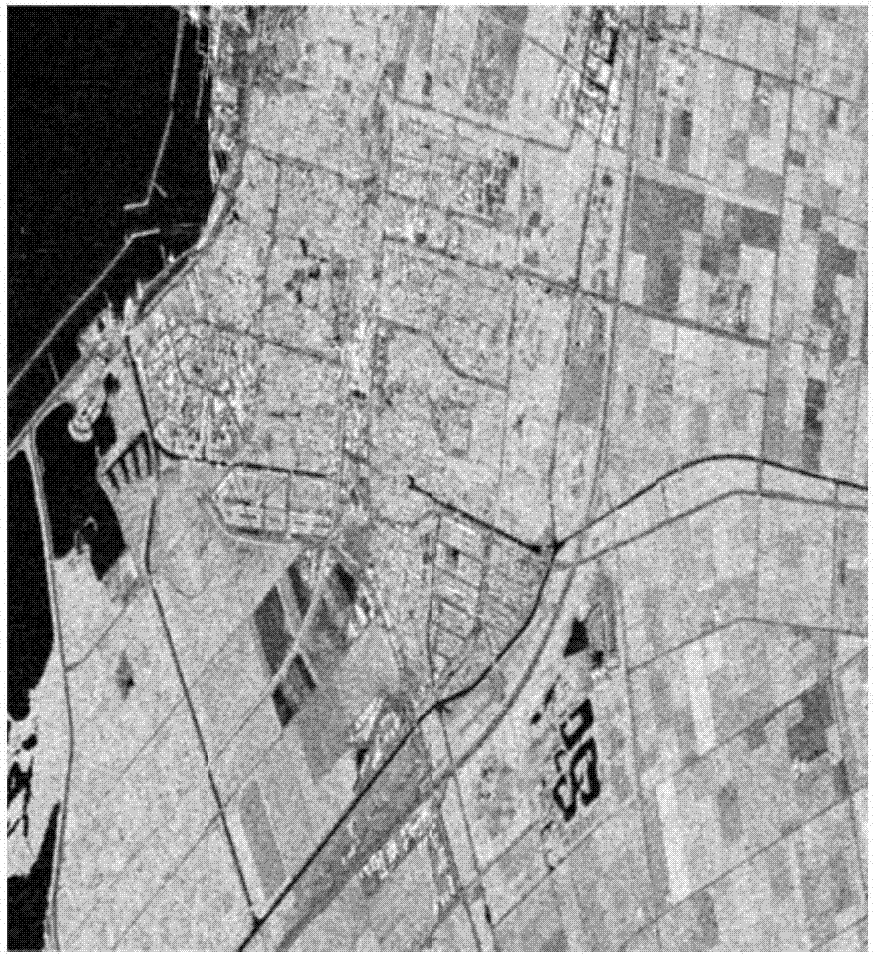Multi-feature fusion-based polarimetric synthetic aperture radar (SAR) image classification method
A multi-feature fusion and classification method technology, applied in the field of polarization SAR image classification based on multi-feature fusion, can solve the problems of manifold learning, unsupervised, non-discriminatory, different spaces, and destruction of feature information
- Summary
- Abstract
- Description
- Claims
- Application Information
AI Technical Summary
Problems solved by technology
Method used
Image
Examples
Embodiment
[0052] The PolSAR (High Resolution Polarized Synthetic Aperture Radar Image) data used in this embodiment is a C-band fully polarized SAR image of the Flevoland area in the Netherlands obtained by the RadarSat-2 system in the quad-polarization fine mode (resolution 5.2×7.6m) In order to verify the performance of the present invention, an area is selected from the fully polarized SAR image as the area to be classified, where the size of the area to be classified is 700×780, image 3 Is a pseudo-color image obtained by Pauli decomposition (polarization target decomposition) of the area to be classified, Figure 4 It is the reference map of the corresponding true value of the features. The selected area to be classified includes four main features, namely: buildings, woods, farmland, and water bodies. Figure 4 Different gray areas in the. At the same time, the pixels (known feature types) that account for 1% of the entire PolSAR image are selected as the training sample set, and t...
PUM
 Login to View More
Login to View More Abstract
Description
Claims
Application Information
 Login to View More
Login to View More - R&D
- Intellectual Property
- Life Sciences
- Materials
- Tech Scout
- Unparalleled Data Quality
- Higher Quality Content
- 60% Fewer Hallucinations
Browse by: Latest US Patents, China's latest patents, Technical Efficacy Thesaurus, Application Domain, Technology Topic, Popular Technical Reports.
© 2025 PatSnap. All rights reserved.Legal|Privacy policy|Modern Slavery Act Transparency Statement|Sitemap|About US| Contact US: help@patsnap.com



